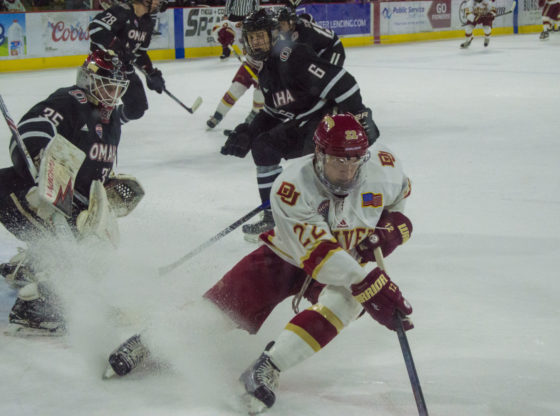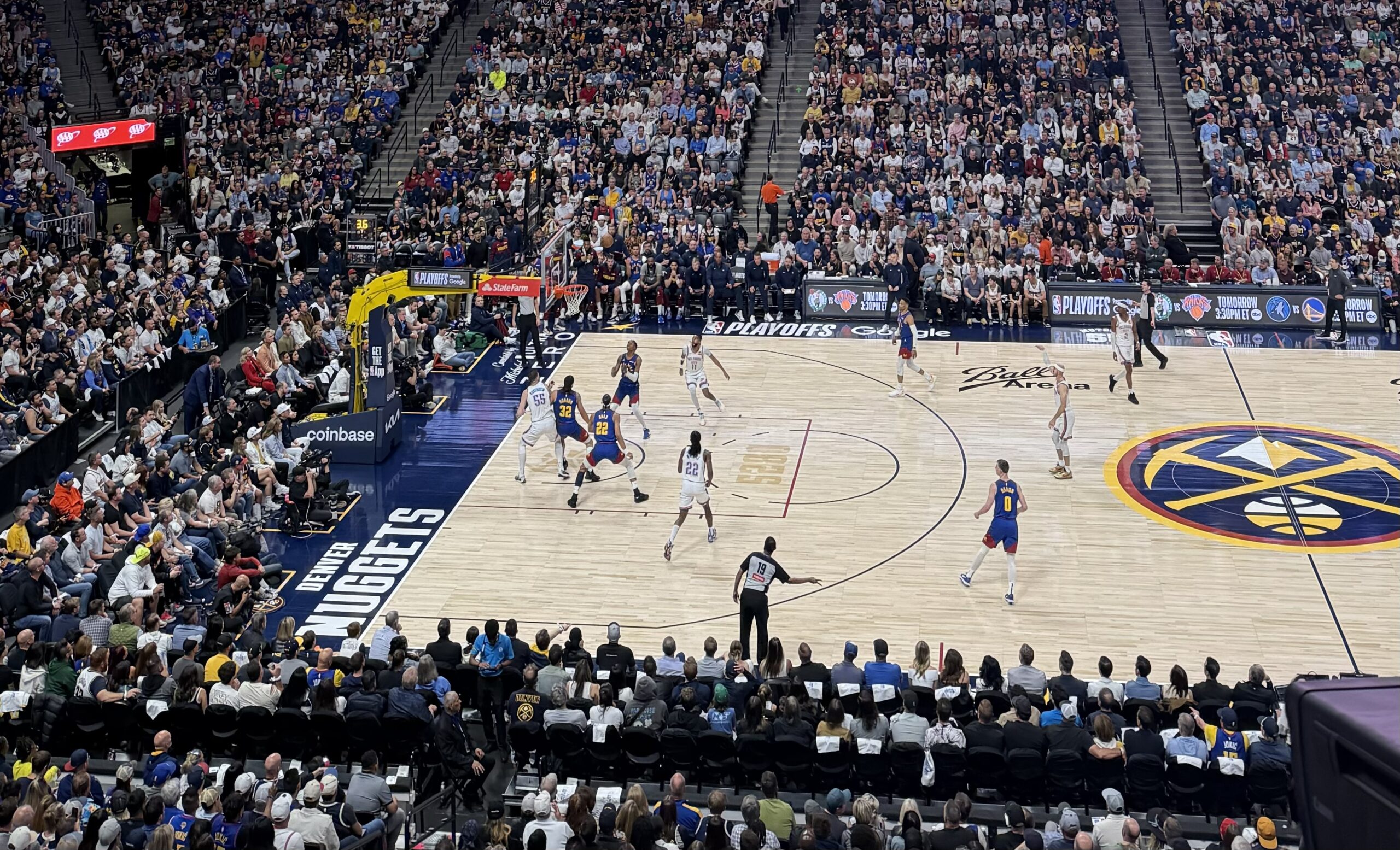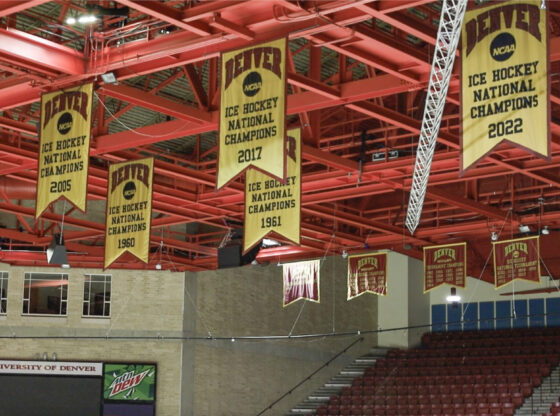 Photo by:
Photo by:
This team does not have uniforms of crimson and gold. Thousands do not gather to watch them in action. When they succeed there is no applause, their victories are unsung. Many have never heard of them, but this team is among the hardest working athletes to perform in Magness Arena.
They are masters at transforming an ice rink to a basketball court or a concert stage. They set Magness up and then knock it down for the next days’ events. In a years time they will change the floor 120 times.
During basketball and hockey seasons the work is tedious.
Any given week during these seasons goes something like this: Magness is an ice rink on Monday and a basketball court Wednesday. After the last basketball game Thursday, the crew converts the arena back to ice for hockey practice and Friday and Saturday’s games.
Immediately after Magness clears out, the crew sets up the court for Sunday’s basketball games then returns it to ice, again, for Monday.
Four back-to-back conversions in one week, happens about five to six times per year, and conversion manager Ken Parish said that is about as hard as it gets.
Each conversion takes approximately 20 people anywhere from eight to 10 hours to complete. Five full-time staff and around 15 workers hired from a day-labor service make up the team. If they’re setting up for capacity, called a “full flip” the process takes two days.
And it isn’t cheap. Changing Magness from its default of ice to a basketball arena and back, costs approximately $8,500, according to Parish.
“I don’t think anyone knows what we do here,” said Eric Santivanez, who has been on the conversion staff for more than eight years. “You come in one day and it’s hockey, the next day it’s basketball and no one knows.”
Parish said, “Most people think you just flip a switch to change from a rink to a basketball arena.”
He has been changing floors for seven years now. The crews do not just push a button. The process is complex.
At 10 p.m. they start by laying down 560 pieces of half-inch thick fiberglass foam matting to protect the ice that remains all year. These 4-by-8 foot pieces are new this year.
“They do a good job,” Parish said. “You wouldn’t know there’s ice under there.”
Next, with forklifts, handcarts and crowbars, the crews delicately take down the glass panels above the dasher boards that line the rim of the rink.
If they’re stressed, the large and heavy panels may shatter.
Once all the glass has been removed, the crew proceeds to take down and store the netting, penalty boxes and benches.
Magness begins to magically transform.
“Its orchestrated chaos,” Parish said.
Working their way up the arena, the team arranges the seating, extending the bleachers past where the dasher walls for hockey were, gradually sloping to the court. Then, they hang large black curtains on the end sections of Magness, behind the hoops, so when basketball games are televised, the arena appears less empty, according to Parish.
This is still just the beginning.
“The hardest thing we have to do is put down the basketball court,” Parish said. “It’s heavy and it has to be exact.”
The court is large puzzle – made up of 285 wooden pieces, each weighing 186 pounds, totaling 26.5 tons. It must be placed to perfection, in a stair step pattern, with all the lines in place. Each of the pieces takes four people to lock in, and then the crew uses a sledgehammer to tighten it.
“It’s a lot of squatting, down and back up,” Santivanez said. “Your legs will get sore.”
The current court is fairly new to Magness, just two years old. It was used for the 2006 Women’s Final Four, then purchased by DU at a considerable discount. Parish said courts costs around $250,000 and last typically seven to 10 years.
“We got the new floor thinking it would be faster for us, but it didn’t work out as we thought it would,” Santivanez said.
This floor has no extra panels, so if one is dropped or dinged up, the crews must repair it.
Hours of hard work and a lot of sweat later, the team places the finishing touches – the baskets, benches and scorer’s table.
Just minutes after a basketball game, the conversion team starts the process in reverse, except now they must condition the ice.
Many of these details go unrecognized, such as making sure the basketball bounces right or that the ice is the density the hockey team likes to skate on.
“The old basketball coach was literally the only one that would thank us,” Santivanez said. “After the conversion in, they pass right by us and you never hear a ‘thank you’ or anything from them. You’d like to hear a ‘thank you.'”
Although this team does not have a national ranking, a trophy display case or a spot in the DU hall of fame, they keep coming back, training hard and performing without credit behind the scenes of Magness Arena.
Go Figure
- $85,000 to change Magness from ice to court, court to ice
- 286 pieces in the basketball court floor
- 186 pounds each piece weighs
- 4.5 African elephants weigh the same as the basketball court
- 26.5 total tons the basketball court weights
- 560 sheets of ice protector
- 20 crew members









